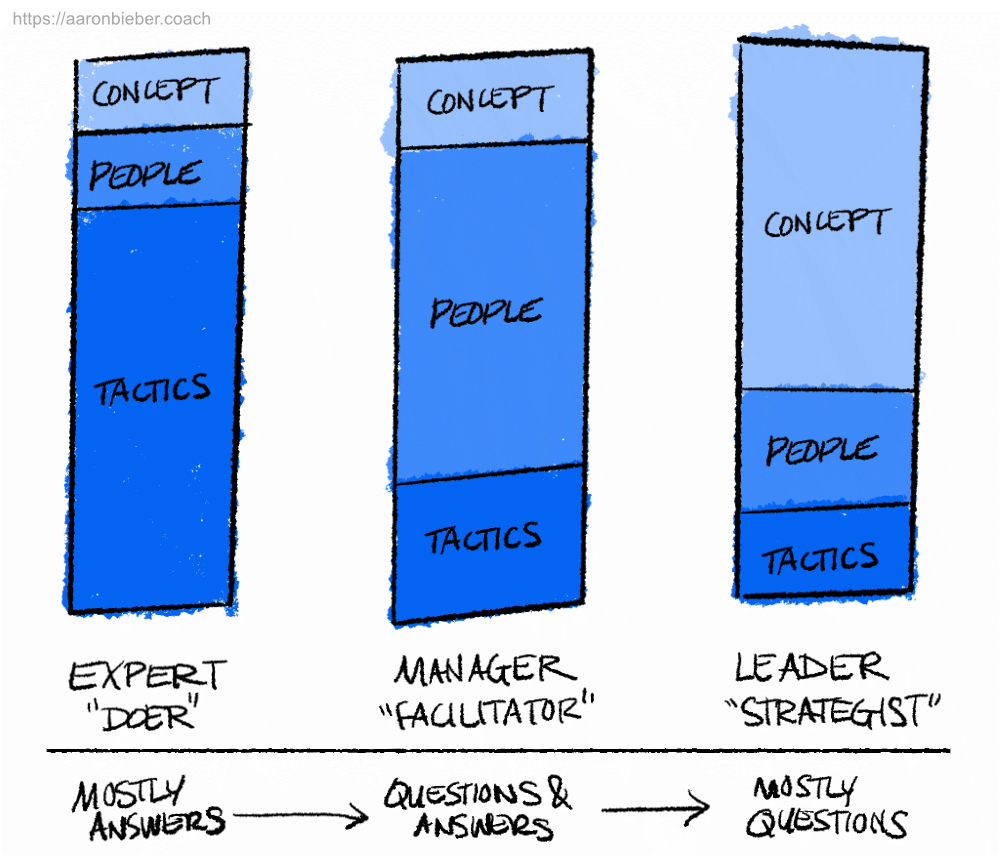Create a "pit of success"
What if there is a way to lead such that success is inevitable? What if, as a side-effect, that leadership also improved trust, intrinsic motivation, and job satisfaction? What would it mean for you, personally, to know how to do that?
You’re probably thinking, “If that existed, everyone would be doing it, and we wouldn’t have any volatility, uncertainty, chaos, or ambiguity in our work!”
Well, it does exist, and it’s remarkably simple. But simple doesn’t mean easy, and anything this important takes time and effort to achieve. If you are up to the task, you can change the way you lead forever.
Today’s product development landscape is terrifyingly complex, and what product development teams are expected to achieve can feel daunting at best and downright impossible at worst. The pendulum is always swinging from urgent functionality needs to crushing technical debt.
As a technical leader, you’re expected to create order and predictability from this chaos, and to deliver the increasingly complex outcomes that customers demand. This is the crux of the problem: how can you build something durable when everything around you is constantly changing?

“Waterfall” was the first attempt to put structure around our work, but it withstands very little unpredictability and is therefore only suited for highly regulated or risk-intolerant projects.
Agile methodology is still very popular, but even setting aside the chronic misinterpretations and blatant commercialization of it, it doesn’t solve the whole problem. In its purest form (as written in the “agile manifesto”), it provides only basic principles and lacks enough specificity that most people do it wrong.
Neither provides the tools to address all of the uncertainties of both software development and human nature.
What is needed is an environment in which success becomes inevitable.
Effective leaders think about their work as exerting force on structures rather than directly on people.1 Every leader will occasionally need to intervene, performance manage, or directly coach individuals, but all of the valuable durability and leverage of your role stems from shaping the environment.
An environment in which success becomes inevitable will have the following characteristics:
-
Self-guiding (when objectives are in danger of not being met, course corrections are made)
-
Self-healing (when flaws are discovered that endanger outcomes, they are repaired)
-
Fun (do you need a definition of fun?)

When set up properly, the environment provides mechanisms that result in these outcomes autonomously, with as little intervention from you as possible. You absolutely participate (and as it happens, your participation is very important), but ideally you no longer steer.
Building this environment, which long-time Microsoft architect Rico Mariani termed “the pit of success,” will require a strategy to discover success and a set of skills to reinforce and sustain it.
The strategy is what I am calling “triple-loop tech leadership,” which is based on the concept of double-loop learning2 and other organizational and systems principles that date as far back as 1980. I call it a leadership strategy, but part of building your environment of inevitable success is teaching everyone in your organization to use it.
The skillset is called “systemic coaching,” which applies broadly accepted coaching principles to systems of people. Google’s “Project Oxygen” research highlighted the link between coaching and effective management3, and systemic coaching is a superset of Google’s own recommendations.
Triple-loop leadership
No organization’s “pit of success” will look the same as another’s. This is where the simplicity of the approach gives way to the challenge of its implementation: you, and your organization, must discover effective mechanisms for self-guiding, self-healing, and fun on your own.
The triple-loop strategy provides the blueprint.

The three loops are:
-
Action
-
Adaptation
-
Awareness
In each loop, perceived problems are addressed with a different set of assumptions, resulting in a different set of possible solutions. By recognizing what loop is present in a given situation and shifting to a different loop, a broader set of options become available.
In the first loop, the “Action” loop, we are asking the question “Are we doing things right?”
In the second loop, the “Adaptation” loop, we are asking “Are we doing the right things?”
In the third loop, the “Awareness” loop, we are asking “What does ‘right’ mean for us in this context?”
Let’s explore the three loops with a simple example. Imagine that you are working with a sprint team and you have observed that stand-ups are taking too long, or are feeling unproductive.
Within the “Action” loop, we might ask the question “What will make our stand-ups more effective for everyone in the team?”
In the “Adaptation” loop, we’re taking a broader view. Most sprint retrospective meetings are focused on work in the “Adaptation” loop. Here, we might be asking the question “Are stand-ups valuable, or might we do something different instead?” or my favorite, “If stand-ups aren’t working, what experiment do we want to run?”
In the “Awareness” loop, we’re going even deeper to invite a change in perspective. We might return to the text of the Agile Manifesto itself and ask “What could it look like for our team to value individuals and interactions over processes and tools?”
As you can imagine, approaching every problem in the “Awareness” loop could be tiresome or even frustrating; not all problems require a “back to the drawing board” approach. Part of this leadership strategy is recognizing how each of these learning loops are beneficial to your team in different situations.
Now that you know what they look like, you’ll start to see them everywhere.
Conceptually, creating your environment of inevitable success involves iterating through the triple-loops for each issue that the team encounters—whether that’s friction in doing the work, missed outcomes, interpersonal challenges, and so on—and implementing the best solutions.
Systemic coaching
If triple-loop leadership is the map, systemic coaching is the skills and equipment needed to read and use it.
Within each iteration toward the goal of a self-sustaining environment of success, you will need to align on shared objectives, create awareness of all the possible options and obstacles, and convert those ideas into action.
Which solution is “best?” How will we make the solutions “stick?” Those are the questions answered by systemic coaching.

A key component in a coaching approach is asking great questions. As you progress in seniority as a leader, your role becomes less about “having all the answers” and more about “asking the right questions.” The most successful CEOs have a deep understanding of their business, but they also ask powerful questions that unlock new opportunities.
Systemic coaching gives you the skills to:
-
Listen actively and be fully present
-
Create crystal clear agreements
-
Question powerfully to reveal unseen options
-
Catalyze forward action
-
Hold yourself and others accountable
As a side-effect, taking a coaching approach to leadership engenders trust, surfaces greater awareness, and drives both learning and action in every interaction.
Putting it together
Using an awareness of the three learning loops; skills in active listening, agreements, questioning, and accountability; and most importantly by working on those skills with everyone in your organization, you’ll be able to:
-
Build and reinforce psychological safety at all levels
-
Realize the full potential of your organization’s diversity
-
Discover new and unexpected solutions to your most challenging problems
-
Effectively delegate the tactics and focus your time on what’s most important
It’s simple, right? Just recognize which learning loop the situation calls for, listen actively, ask powerful questions, and follow through.
But “simple” doesn’t mean “easy.” Skills take practice to master, and practice takes time. With practice and persistence, you’ll create an environment in which success is inevitable.
Would you like to learn this?
I’m developing a live, interactive, hands-on course to help leaders like you implement this method. If you’d be interested in exploring that opportunity, comment, reply, or email me directly!
Was this useful? Want more? You know what to do!
subscribeWhat would you create, if you knew you couldn't fail? I help engineering leaders achieve their impossible dreams. Learn more here.

